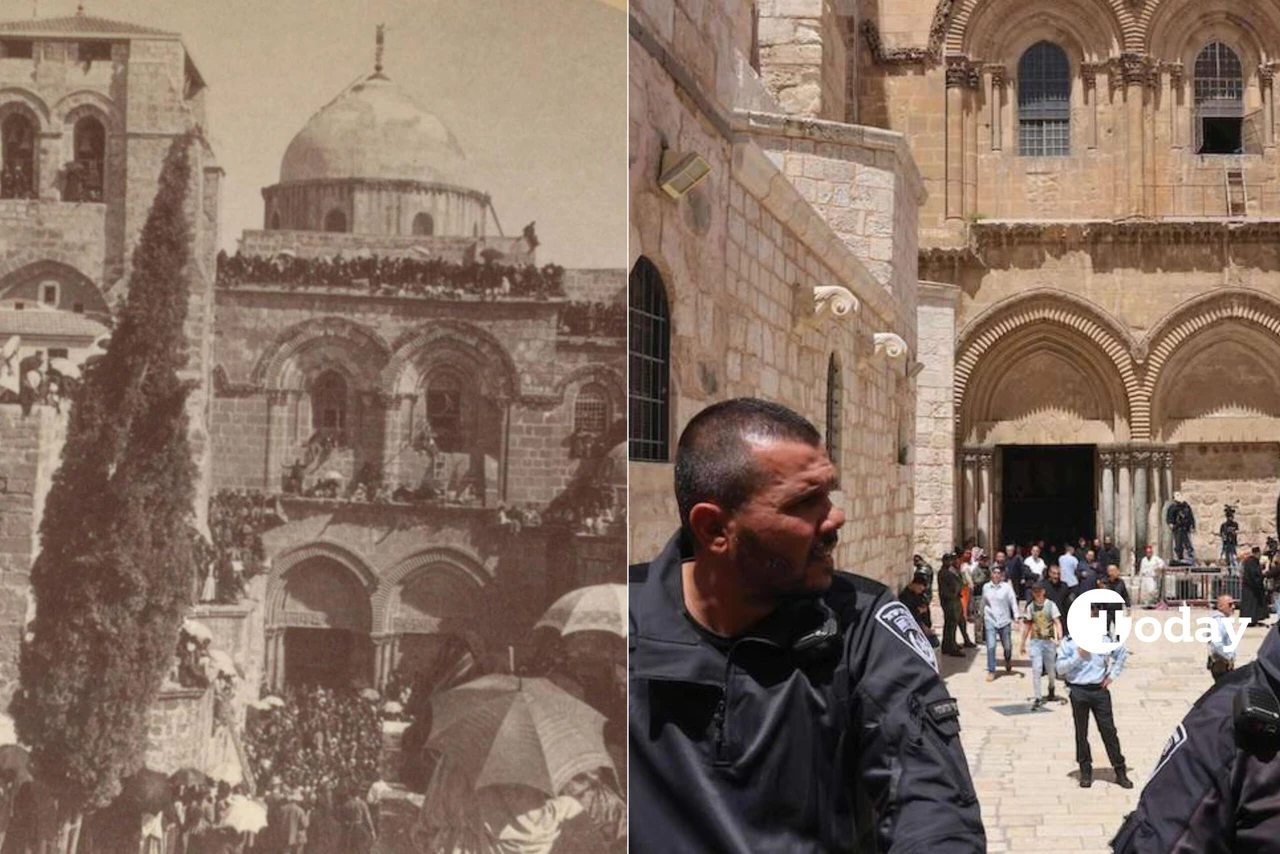‘Protocol’: All you need to know about Ottoman Eid ceremonies
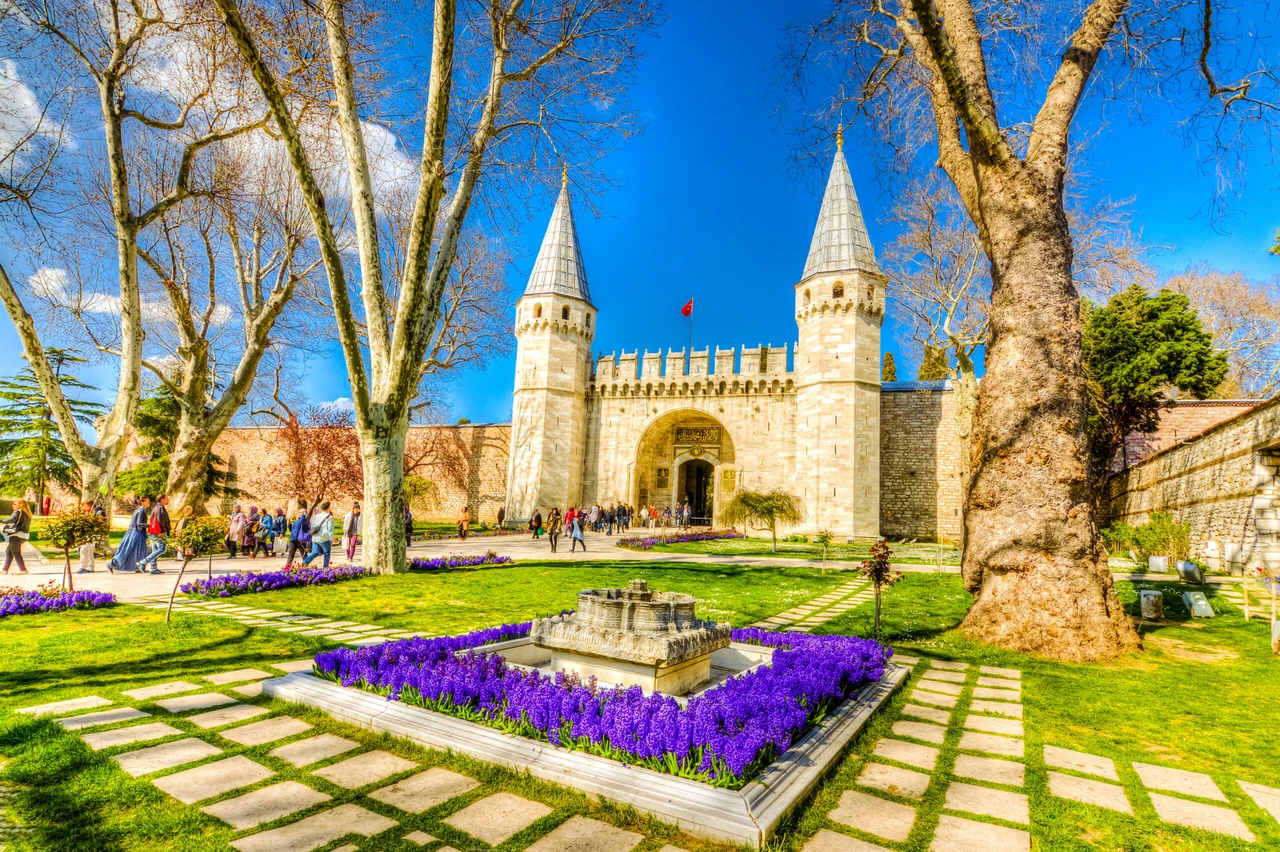 The Gate of Salutation at Topkapi Palace, Istanbul, Türkiye. (Adobe Stock Photo)
The Gate of Salutation at Topkapi Palace, Istanbul, Türkiye. (Adobe Stock Photo)
“Tesrifat” in the Ottoman Empire referred to the official procedures of the state, similar to today’s “protocol.” Meaning “honoring one’s visit, honoring a place or person,” the word “tesrif” (plural: tesrifat) gained the meaning of “protocol/ceremonies” in the 18th century.
The rules regarding ceremonies were first compiled into a code of law during the reign of Fatih Sultan Mehmed, assembled by the period’s chancellor, Leyszade Mehmed Efendi, under the Sultan’s order to address additional needs and written from the Sultan’s perspective.
The ceremonies included announcing royal births with cannon fire, followed by the cradle procession and the “bed-i besmele” ceremony as children grew older. There were also ceremonies for each prince’s departure to a province before the 17th century, the accession ceremony when a prince became sultan, the sword procession and girding of the sword, and the Friday procession. Other ceremonies included visits to tombs before journeys or campaigns, the sultan’s departure from the capital for wars, the issuance of the imperial standard when appointing a commander-in-chief, and the annual imperial alms sent to Mecca and Medina.
The Imperial Council meetings, salary distributions to soldiers, ambassador receptions, and celebrations of birth and accession anniversaries were also important events.
Additionally, there were funeral ceremonies, circumcision festivities for princes, princesses’ weddings, dowry and wedding processions, and celebrations for special days like Eid, religious feast days, Laylat al-Qadr, Ramadan, iftar meals, and visits to the Holy Mantle. All these events were officially conducted with the participation of state officials.
In addition, clothing held an important place in ceremonies; more elaborate or simpler garments were preferred according to specific ceremonies. The sultan did not wear a different style of clothing for ceremonies but preferred those made of more valuable fabrics like seraser.
For headwear, they especially favored jeweled turbans (mucevveze and selimi), adorned with various precious stone plumes. State officials also used similar styles of headwear and wore ceremonial furs or silk outer garments. More ostentatious clothing was preferred for Eid, Friday processions, sword processions, and imperial campaign processions, while this was not the case for accession ceremonies, where they were only seen changing their outer caftans.
In the Ottoman Empire, “Eid” (bayram) was of religious origin, primarily referring to Kurban Bayrami (Eid al-Adha) and Ramazan Bayrami (Eid al-Fitr) among Muslim administrators and the public. Apart from these two Eids, Nowruz Bayrami, celebrated in certain parts of Anatolia, was also observed, though without grand ceremonies in the palace and Istanbul, and gifts were exchanged under the name of “nevruziyye.”
Throughout Ottoman history, Eid days were always greeted with ceremonies in the palace, the capital, and centers where administrators resided. Even during campaigns, these customs were not abandoned, though in such situations, only the morning greetings of the first day were observed, and other ceremonies and congratulations were omitted.
Zeynep Tarim Ertug, who has extensive knowledge on the subject, wrote the following in her book: “Ceremonies, which gained importance and richness over the centuries, became notable for their wider participation and detailed specifications from the 17th century onward.
This development, emerging as a natural extension of the modernization/urbanization process in the last two hundred years of the state, turned into a visual feast from another perspective.
However, it also led to expenditures that did not align with the weak economic situation and caused other points that weakened the social unity of the state and society to be overlooked Celebrations that began in the mid-15th century continued in the same manner until the 19th century; the effectiveness of the Bab-i Ali and the abandonment of Topkapi Palace led to changes in procedures.”
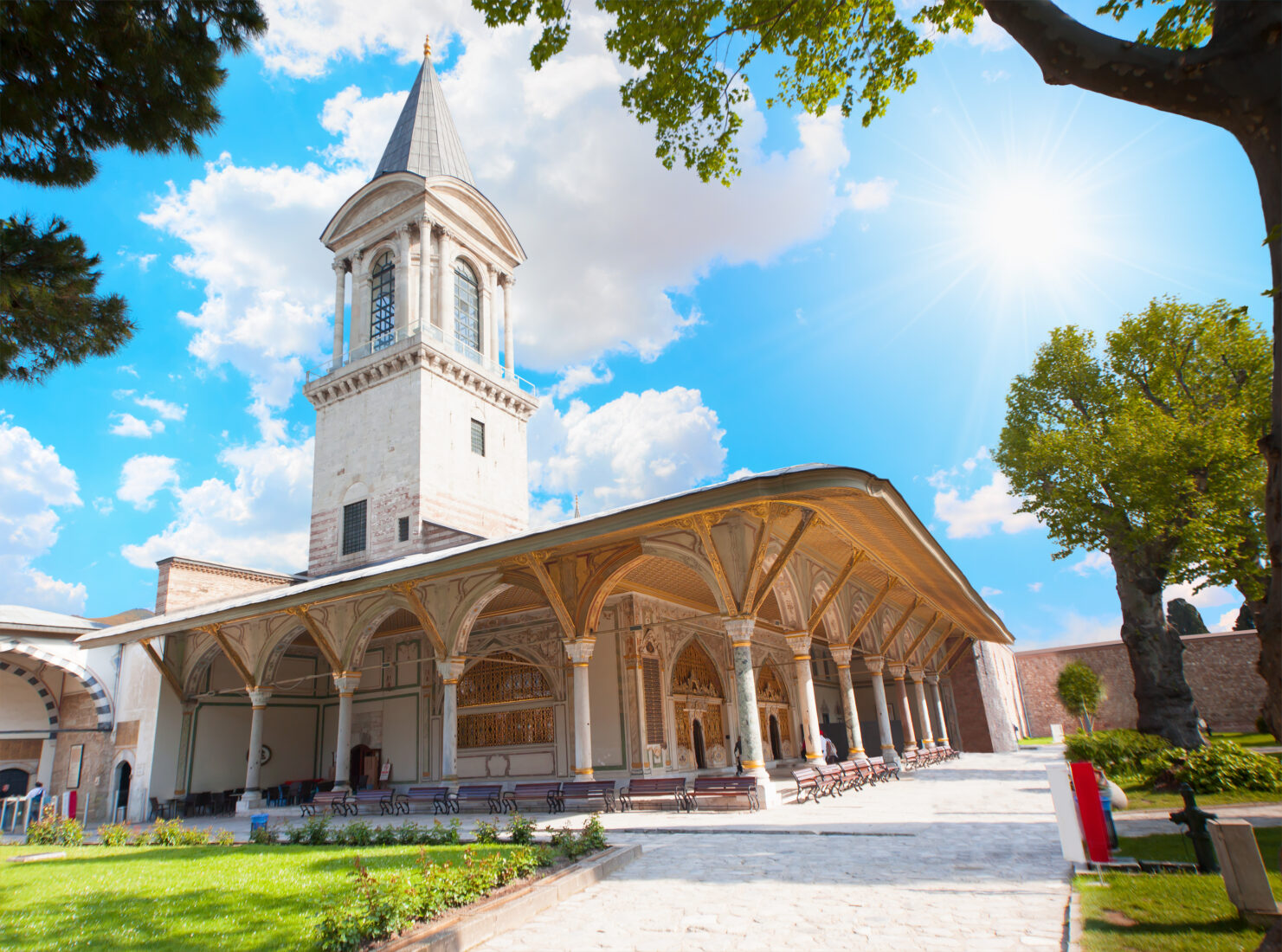
Arife ceremony and Arife divan
Most official sources describe Eid ceremonies from the Grand Vizier’s perspective. Especially the ceremonial registers provide detailed accounts of the parts related to the Grand Vizier. This situation stems from the ceremonial officer’s allegiance to the Grand Vizier. The fundamental source for how Eid was celebrated in Ottoman history is the codes of law.
The Organization Code recorded by Fatih Sultan Mehmed became the basis for all subsequent records.
The Ceremonial Registers, on the other hand, describe in detail the types of ceremonies held among statesmen, starting from within the month of Ramadan. Naili Abdullah Pasha’s Register of Ceremonies and Esad Efendi’s Ancient Ceremonies are among the most comprehensive of these.
Additionally, Lutfi Pasha’s work, Asafname, written during the reign of Suleiman the Magnificent, provides information about the status of the Grand Vizier and the Sheikh al-Islam during Eids. Moreover, the source works, miniatures, and travelogues of the period contain information about Eid greetings and ceremonies. The day before Eid, Arife was observed both in the palace and among the public. ,
This ceremony, held one day before the Eid greeting called ‘Muayede,’ was performed in the second courtyard of the palace. In the courtyard, under the dome, facing the Justice Pavilion, the Mehter band played, and the Arife ceremony took place. According to Ismail Hakki Uzuncarsili, there were some differences in this ceremony between the 17th and the second half of the 18th centuries.
Generally, this ceremony was conducted as follows: Afternoon prayer, the head of the chamberlains and the chamberlains of the Imperial Council, dressed in council attire and holding their staffs, formed a line facing the sultan’s seat, the Justice Pavilion, in the second courtyard, known as the parade ground, and the Mehter band also took their places.
Additionally, according to the law, harnessed animals from the royal stables stood behind the Mehter band; to prevent them from getting startled, one of the royal stable saddlers, wearing a jeweled turban, would ride on them. These animals were extraordinarily adorned and under the supervision of the Master of the Horse.
The ceremony would begin after the afternoon call to prayer (ikindi ezani) with the recitation of the Fatiha. The Mehter band would play, the chamberlains would keep the rhythm, and then the prayer chamberlain would recite a prayer.
The prayer would end with the Fatiha, and he would receive a specific gift. While this ceremony was being performed in the second courtyard of the palace, the Arife Divan would convene in the Enderun section.
The sultan would sit on the throne placed in the Has Oda (Private Chamber) courtyard and accept the congratulations of the Birun (Outer Palace) people. Then, the prayer chamberlain would recite a prayer, and after listening to the Quran in the Agalar Mosque, they would return to the Audience Chamber.
On the same day, the Sultan would accept the congratulations of other state officials, and the horses presented by the Grand Vizier and the Sword Bearer would be paraded before the Sultan and then sent to the royal stables. After days of preparation in the palace courtyard, lighting was provided with torches, and since it was still dark, each guest would be greeted by the gatekeepers with torches in their hands.
The palace gates would open after midnight for the morning ceremony, and guests would begin to arrive. The Grand Vizier, along with his entourage, wearing a large turban (kallavi basilk) and a kaftan called an outer or ceremonial fur, would come to the Kubbealti (Dome Chamber).
The viziers, chief military judges, treasurers, and the chancellor, who were members of the council, and the admiral and governors-general, who attended the council when necessary, would take their usual places; scholars who were not members of the council would sit on the divans in the treasury and the old council hall next to it (slightly above today’s Kubbealti towards the Babussaade).
After everyone was seated, the Sheikh al-Islam would arrive and sit in his designated place in the council. The Grand Vizier, being the highest-ranking, would arrive last and, after greeting those who stood to welcome him, would sit in his place just below the Justice Tower.
As the Grand Vizier, viziers, and the Sheikh al-Islam entered the palace, the Mehter band would play. Thus, all the guests would have arrived at the palace before the morning prayer and would be ready to await the ceremony.
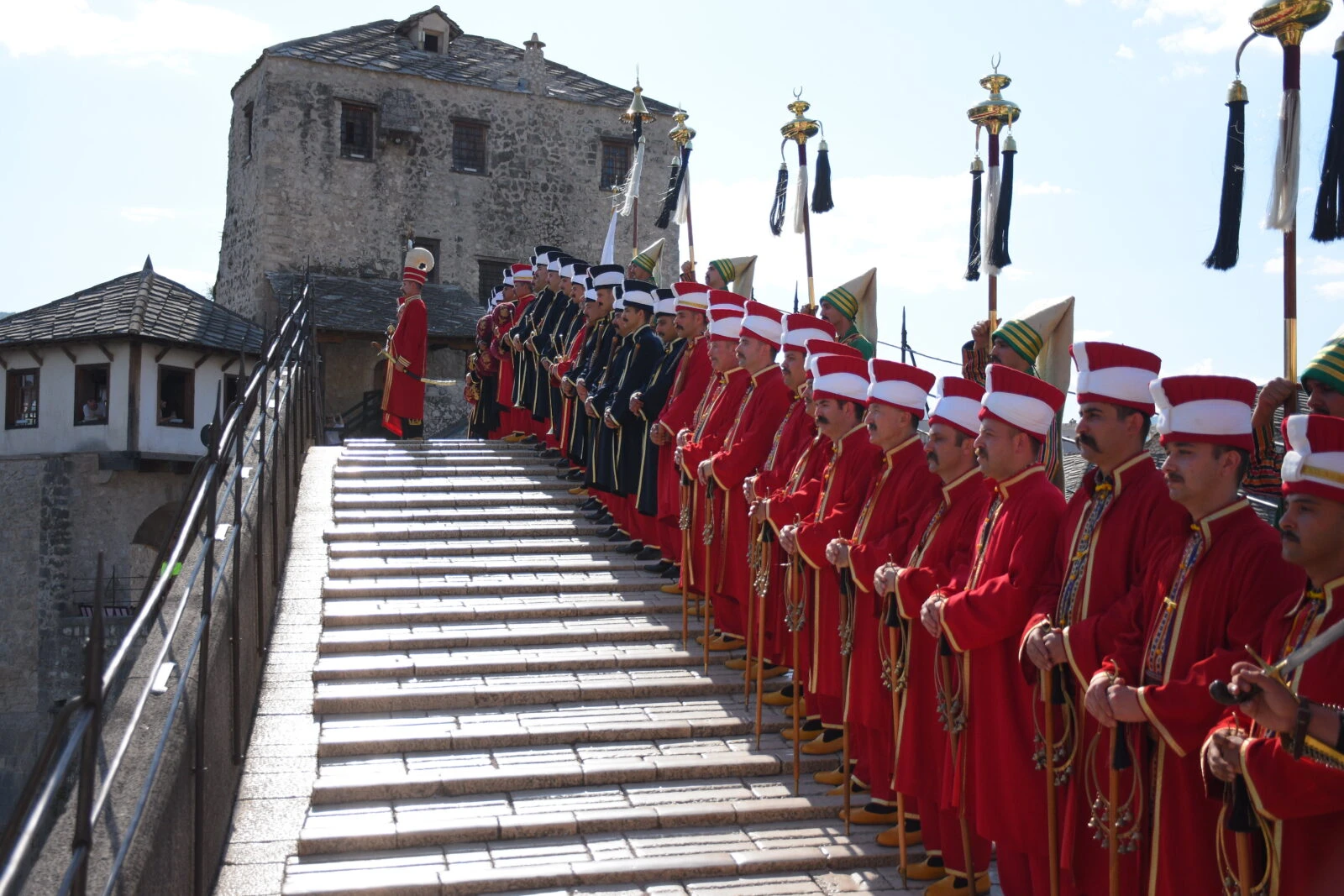
Eid greeting customs
After the morning prayer, those present, led by the imam, would congratulate the Grand Vizier on Eid; while this greeting was taking place in the Kubbealti, a similar greeting ceremony would take place in the Has Oda, where the Sultan was. In accordance with the rule, ‘My order is to ascend the throne set up in the Divan Square during Eids,’ the dwarfs, standing in a wide circle on the ground, would open the Eid greetings by kissing hands in order of seniority.
Then, the head of the Privy Chamber, the Sword Bearer, the Chamberlain, the Stirrup Holder, the Chief Falconer, and the Turban Bearer, followed by the Enderun officials, would kiss hands.
After this, the Sultan, wearing the Eid greeting kaftan, would go out; he would exchange Eid greetings with the royal imam and the chief physician on the way. Then, a wide circle would be formed in the second courtyard, and they would begin to line up according to the greeting procedure.
Looking from the throne, the halberdiers with locks would be on the left rear, the Crimean Princes in front of them, palace officials starting with the pages (peyk) to the left front, the superintendents, chamberlains, and gatekeepers holding silver staffs would take their places directly opposite, and the Mehter band would be placed behind the left and middle sections.
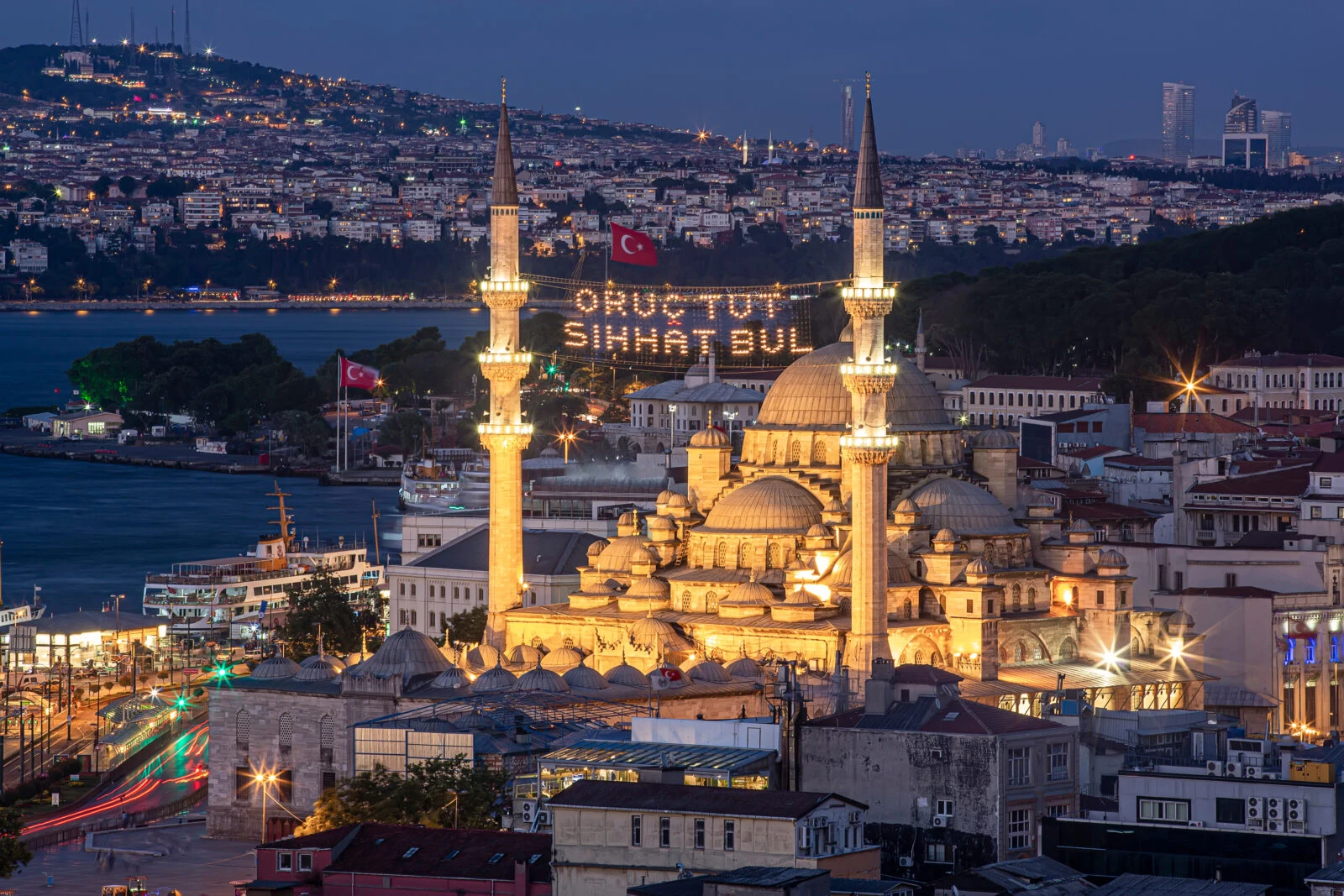
Additionally, spare horses, adorned with very valuable jeweled saddles brought from the imperial stables, would be lined up directly opposite the throne. Each group, with their colorful clothes and plumed headwear, would create a picturesque scene.
Applause would be given when the sultan mounted and dismounted his horse, prepared for battle, sat on the throne during ceremonies, and descended from his throne, and during the congratulations of the Crimean Khan, the Grand Vizier, the Sheikh al-Islam, the sultan’s teachers, the viziers, the chief military judges, the head of the descendants of the prophet, and others.
During the Eid greetings, i.e., congratulating the sultan on the occasion of Eid, prayers would be recited in unison and with a specific rhythm (“May God’s help be upon you; may your fortune be bright, may your glory increase; may your majesty live a thousand years with your state; God willing; do not be arrogant, my sultan, God is greater than you; may your fortune be good”).
The greetings would begin with the prayer of the head of the descendants of the prophet, followed by the Crimean Princes kissing hands.
The Sultan would stand for both of them. Then, the princes’ teachers, superintendents, former governors-general, and governors would greet, and the head chamberlain and the chief steward of the gatekeepers, who were in charge of ceremonies, would invite the council members.
Those in the council hall would stand up and join the ceremony circle in the courtyard. The Grand Vizier would first kiss the hem of the Sultan’s robe and then move to the Sultan’s right. Then, the viziers, chief military judges, treasurers, and the chancellor would take their places in order behind the Grand Vizier.
The Sheikh al-Islam would kiss hands, offer a prayer, and then leave without waiting. Then, the scholars and the military class would exchange Eid greetings, and the Sultan would retire to rest before joining the Eid procession.
After the Eid greetings, the most important ceremony is the Eid procession. The Eid procession, like the Friday procession, refers to the Sultan’s departure for prayer with a retinue.
The Sultan, mounted on horseback with his stirrup holders by his side, would exit through the middle gate and, with the council members ahead, proceed to Hagia Sophia or the Sultanahmet Mosque.
After the prayer, the Sultan would return to the Private Chamber (Has Oda) with the procession, and this time, he would exchange Eid greetings with the ‘Enderun’ (Inner Palace) people, the palace residents.
Following the greetings, a feast would be given in the Council Hall (Divan), accompanied by the Mehter band, and thus the ceremony would conclude.
